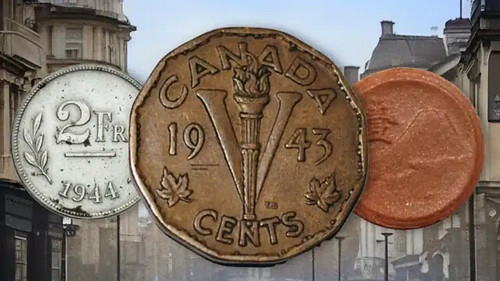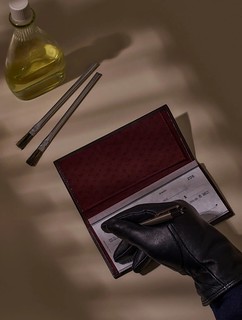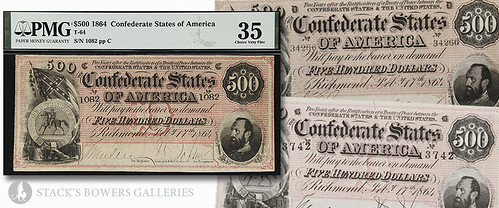
PREV ARTICLE
FULL ISSUE
PREV FULL ISSUE
LOOSE CHANGE: DECEMBER 10, 2023Here are some additional items in the media this week that may be of interest. -Editor Lianna Spurrier published a nice article for CoinWeek about WWII coinage. Here's an excerpt - see the complete article online for more. -Editor World War II affected coins almost everywhere around the world. In the United States, the most dramatic effect that the war had on our coinage was the steel penny. The composition of our nickels changed as well, but that wasn't an immediately noticeable change in the appearance of the coin. Both changes are well-known by collectors today. But in other countries, the coinage was changed in much stranger and farther reaching ways than steel cents and partially-silver nickels. This article presents a sampling of the fascinating coin experiments conducted abroad.
To read the complete article, see:
Check collecting is popular with a whole new demographic - crooks. This New York Times article discusses the trend. -Editor
Even as check usage has rapidly declined over the past couple of decades, check fraud has risen sharply, particularly since the pandemic. The cons may start with stealing pieces of paper, but they leverage technology and social media to commit fraud on a grander scale, banking insiders and fraud experts said. In the past, criminals needed a special internet browser that would grant entry into the dark web marketplace of stolen checks, maybe even someone to vouch for them — now all they need is an account from Telegram, a messaging app.
A recent surge in mail theft caused the Financial Crimes Enforcement Network — an arm of the Treasury Department known as FinCEN that is charged with safeguarding the financial system — to sound alarm bells this year. Thieves have attacked mail carriers, or stolen and sold carriers' arrow keys, which unlock mailboxes within a certain area. The checks are stolen from the mail, and then criminals carry out a classic fraud:
To read the complete article, see:
An article by Stack's Bowers Currency Auction Associate Bradley C. Trotter discusses the changing colors of the 1864 Confederate $500 note. -Editor As the conflict wore on, the Confederacy faced increasing supply issues stemming from repeated defeats on the battlefield and a deteriorating economy. Domestic supply shortages combined with access to European markets being increasingly cut off by Union naval blockades, the production of Confederate banknotes began to suffer.
This phenomenon is perhaps best illustrated by the $500 note issued in 1864 (T-64). It bears the portrait of then recently deceased Lieutenant General T.J. Early issues of this denomination featured a reddish hue that offered visually striking contrast with the various design elements. Later printings for the most part lacked this aesthetic distinction due to difficulty acquiring the ink used to produce these notes. Printers diluted their ink stocks to make it last longer, which resulted in the loss of color on most examples of the type. Once a bright red, the notes printed using diluted ink stocks came to display a less and less prominent pinkish hue with each subsequent printing until a new supply of red ink was received at some point toward the end of the conflict. Those printed using the new supply of ink bear an even darker shade of red compared to previous printings.
To read the complete article, see:
Wayne Homren, Editor The Numismatic Bibliomania Society is a non-profit organization promoting numismatic literature. See our web site at coinbooks.org. To submit items for publication in The E-Sylum, write to the Editor at this address: whomren@gmail.com To subscribe go to: https://my.binhost.com/lists/listinfo/esylum All Rights Reserved. NBS Home Page Contact the NBS webmaster 
|


